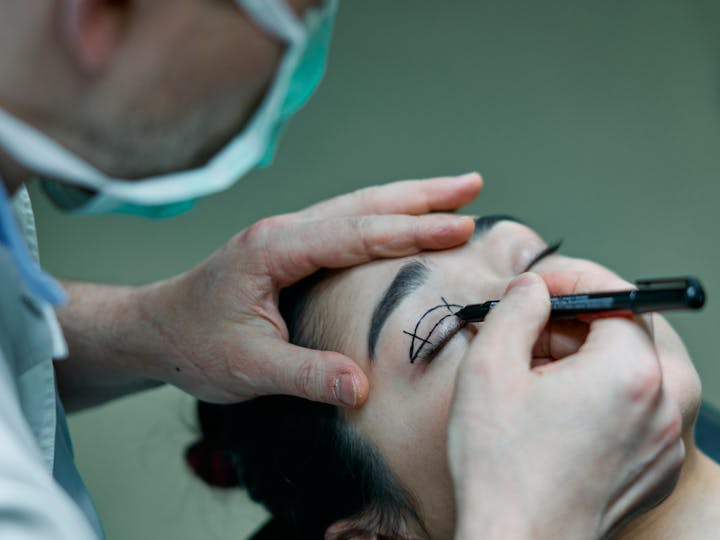When you think about eyelid surgery, you might picture dramatic before‑and‑after photos. Yet most people aren’t looking for dramatic change—they just want a refreshed, more rested version of themselves. This initial consultation marks the first real step toward that goal. You may feel a bit nervous, and that’s normal. And knowing what lies ahead can turn uncertainty into ease.
So, whether you’re in Newport Beach, California, or enjoying life in other cities, clarity is essential and brings you peace of mind.
In this article, we’ll walk you through the consultation step by step. Keep reading to see how each part of the process leads to more confidence, better decisions, and a smoother overall experience.
Step 1: Check-In and Intake Forms
Once you arrive at the clinic, the front desk will check you in and hand you a few forms. These ask about your medical history, current medications, allergies, and previous surgeries. It may seem routine, but the surgeon depends on this information to avoid any risks.
Be honest and thorough. If you take blood thinners, supplements, or anything else that could affect healing, write it down. This step is usually quick but plays a big part in how the surgeon plans for your safety. The goal is to prevent complications before they start.
Step 2: Personal Concerns and Appearance Goals
Once your paperwork is done, you’ll meet the surgeon or their assistant. This is your time to share what you’ve been noticing. For some, it’s puffiness under the eyes that won’t go away. For others, it’s droopy lids that are affecting vision or making them look tired all the time.
You’ll also talk about what you hope to see afterwards. Want to look more awake? Feel like your eyes don’t match how you feel inside? Say it out loud. Your input matters more than you think. This isn’t about impressing the doctor. It’s about making sure you’re on the same page.
Step 3: Physical Evaluation and Facial Review
Next comes the facial assessment. The surgeon will examine your eyelid area—looking at skin texture, fat pads, muscle tone, and your natural facial structure. They may also take medical photos for your record. These are used for surgical planning and tracking progress.
People looking into eyelid surgery in Newport Beach, Ca, or beyond often seek out specialists known for results that appear natural and well-balanced. Surgeons in these areas typically focus on fine details and make careful evaluations that support both function and appearance. Though this step is clinical, it’s also collaborative. Your features guide the strategy.
Step 4: Learning About the Procedure Itself
Once the exam is done, the surgeon will walk you through how eyelid surgery works. You’ll learn what kind of procedure suits your needs—upper, lower, or both. They’ll explain where the small incisions go, how much tissue may be removed, and what type of anesthesia will be used.
This part of the visit isn’t just educational. It also gives you time to ask questions. If you’re wondering about healing time, pain levels, or scarring, now’s the time to speak up. A quality consultation allows space for every concern. The more you ask, the more confident you’ll feel in your next steps.
Step 5: Healing, Risks, and What to Expect
The surgeon will walk you through what happens after the surgery. Expect some swelling and bruising. Most people take several days off, and it may take a couple of weeks before the area settles into its final look. You’ll hear tips on recovery, such as keeping your head elevated and avoiding certain activities.
They’ll also be honest about risks. No surgery is without them, and it’s better to know upfront. Common risks include infection, minor scarring, or longer healing times. A trustworthy clinic won’t downplay these points. Instead, they’ll explain how such issues are handled if they arise. Knowing this helps you make a more confident decision.
Step 6: Cost, Scheduling, and Final Thoughts
To wrap up, you’ll speak with the clinic about fees, available dates, and how the scheduling process works. This includes everything from surgical costs to facility and anesthesia fees. Ask what’s included and if there are any extra charges you should be aware of.
They’ll also guide you through the timeline—how far in advance to book, how much recovery time to plan for, and when follow-ups will happen. This final step puts all the pieces together. By now, you should have a clear view of what the surgery involves, what you’re responsible for, and how to take the next step if you’re ready.
Conclusion
Your first eyelid surgery consultation is more than a formality—it’s your introduction to the process and your chance to feel confident about the road ahead. Each step plays a role in building that trust.
Thinking about eyelid surgery? Schedule a consultation with a board-certified expert who listens, explains clearly, and helps you make a choice that feels right for you.




